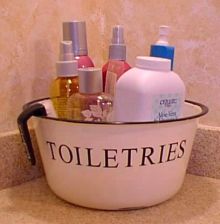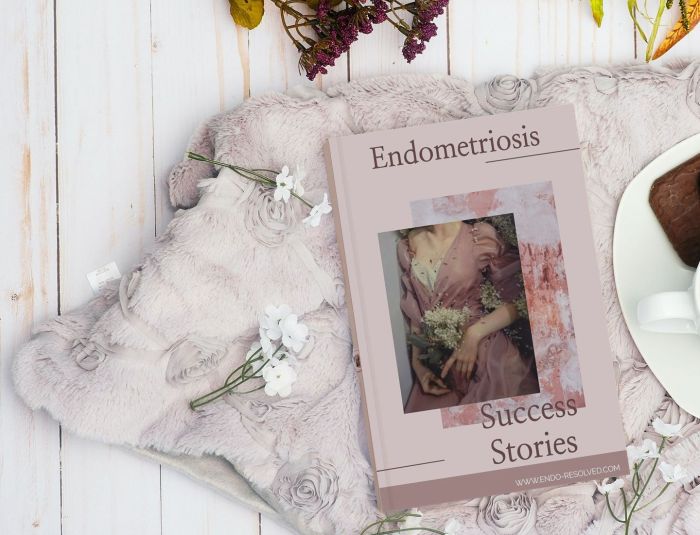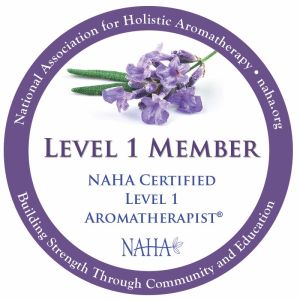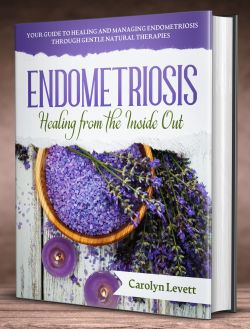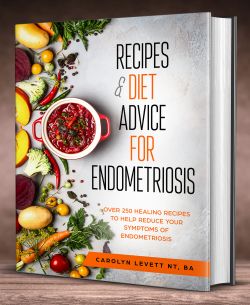Advice for Avoiding Toxic Toiletries
Why you need to avoid toxic toiletries, reduce toxins in your body and reduce your exposure to xeno-estrogens - which will help to improve your symptoms of endometriosis
When you have endometriosis, it is not only what you put in your body which will affect your health, it is also what you put on your body that can affect your health.
We are talking about the various toiletries and cosmetics you use every single day - these can have serious detrimental effects on the health of the average human being, but for women with endometriosis, some of these chemicals can mimic the effects of estrogen and wreak havoc with your health.
Most toiletries which are in use in nearly every home today contain toxic chemicals and these chemicals can act as xeno-estrogens. These chemicals are used because they are cheap, and in turn this makes for bigger profits. The manufacturers of these products will know about the lethal concoctions they are putting together, but turn a blind eye to it.
When these chemicals arrive at the cosmetics factories, they are contained in large containers, and on the containers will be warning labels, including the ‘skull and crossbones’, denoting that the contents are highly dangerous and toxic.
And yet these same ingredients go into the finished products, which are then sold to the general public. These products include shampoo, baby bath, body lotions, face creams, sun creams and so on.
Over the past decade, scientists have been urgently investigating the effects of low levels of synthetic personal care product chemicals found in our water -- lakes, rivers, oceans. Scientists around the world have now linked these chemicals from personal care products to a growing global health crisis, causing life-threatening and costly metabolic and neurological disorders.
The US Environmental Protection Agency (EPA) recently reported that they have found synthetic hormone-disrupting chemicals in shampoo, hair colourants, sunscreens, fragrances and pharmaceuticals. These chemicals are washed into our water every day and, as a result, they never go away -- they are persistent because of daily replenishment via bathing, swimming and urination.
Out off the 80,000 plus chemicals used in products today, just a tiny fraction was ever fully tested for toxicity, let alone for their hormone interference potential. Currently, toxicity tests required by the government do not evaluate endocrine disrupting effects, so even so-called "tested chemicals" can have unidentified hazardous health effects.
The US Environmental Protection Agency (EPA) in their report "Pharmaceuticals and Personal Care Products in the Environment: Agents of Subtle Change?" reported that:
'the chemical preservatives called parabens—methyl, propyl, butyl and ethyl (alkyl-p-hydroxybenzoates) — displayed estrogenic activity in several tests.'
This means that these chemicals mimic your body’s own hormones (xeno-estrogens) and can have endocrine-disrupting action when they are rubbed into your body or washed down the drain to end up in your drinking water. These disruptor's interfere with your body’s endocrine system: your hypothalamus, your ovaries, and your thyroid — virtually every system in your body.
Endocrine disruptor's are transported into the body daily, via absorption through the skin and hair follicles when using personal care products.
What is an endocrine disruptor?
Endocrine disruptor's are chemical substances, primarily man-made synthetics that interfere with the function of the endocrine system. These synthetics may be derived from petroleum or vegetable sources and are created in environmentally unfriendly industrial processes using toxic catalysts and reagents.
These chemicals mimic, block or disrupt the actions of human (and animal) hormones and, unexpectedly, do more damage at low levels of exposure than at high levels. These chemicals can also work in sinister yet subtle ways by disrupting the body's ability to produce adequate quantities of hormones or by interfering with the body's hormonal pathways.
One single chemical can affect many parts of the endocrine system. Often minute amounts of several of these environmental hormone chemicals can combine to create effects thousands of times more potent than a single chemical.
This cocktail of chemicals leaves a lasting and damaging legacy on your body. Using toxic toiletries will seriously impede your chances of recovering your health and aiming to heal from endometriosis.
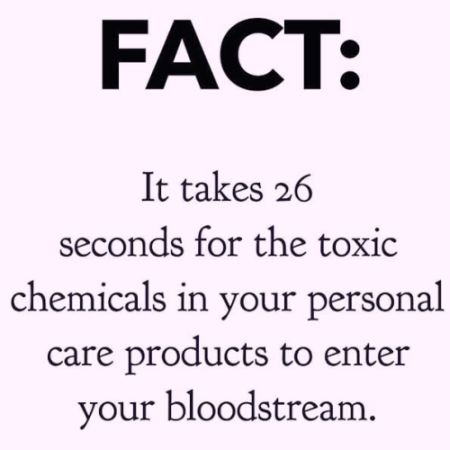
What are your alternatives?
If you have been using toiletries which are laden with chemicals, you need to seriously consider changing your products to safer options to help you improve your health and will also reduce your symptoms of endometriosis.
Fortunately, there are a many health care product companies who produce chemical free natural toiletries. Some of these companies also have 'green' credentials, while others donate some of their profits to charitable projects.
Some of these natural products may be a bit more expensive, but the pay-off is the security in knowing that you are using a safe product that is not going to damage your health.
If you are interested here are a few tips and recipes to make your own safe toiletries
Resources:
https://www.fertstert.org/article/S0015-0282(16)61389-4/fulltext
https://globaljournals.org/GJMR_Volume16/4-Endocrine-Disruptors-in-Endometriosis.pdf
https://www.researchgate.net/publication/308759333_Endocrine_Disruptors_in_Endometriosis
 As featured in:
As featured in: